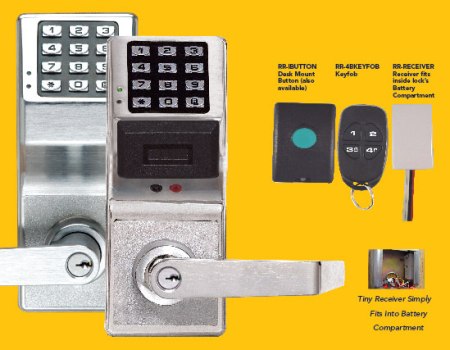Unfortunately, we live in a world where the security of our schools is becoming more of a concern. For years, educators and administrators have had to find a reliable way of reacting in an emergency caused by a natural disaster, but now the threat of ill-intending humans is just as real, if not more so.
In the last decade, following the incident at Columbine High School, lock manufacturers developed a double-keyed classroom “intruder” lock that would allow locking of the outside trim from the secure side of the door. A key turn one direction would lock the outside trim, and the opposite direction would unlock the trim. This would protect the administrator or teacher from being exposed to a threat outside while security the door. Many school systems standardize on this lockset function, notably Atlanta Public Schools here in Georgia, for their classroom doors. The problem with this lock is that it can be difficult in an emergency situation to determine if indeed the outside has been locked. In the teachers’ mind, they must ask themselves, “Did I turn the key the right way, and is the door locked?” The only way to really ascertain would be to open the door and check the outside trim, thereby exposing the teacher and any students in the classroom to the threat, defeating the premise of the lockset.
PDQ Manufacturing has been a value-added manufacturer of locks for over 30 years. Recent innovations include an LED option that can be specified on the double-keyed classroom intruder lockset. When the outside trim is locked, this LED will light on the inside of the door only when the button is pressed, offering a verification that the outside trim is locked. The LED option is a small plate that mounts under the inside rose of the cylindrical lock. A watch battery powers the light, and since the LED is only lit when the button is pressed, the battery life is estimated at 10 years. If you are considering an upgrade to your facilities, please call us for a demonstration of this unit. More information and pictures can be found by downloading the link below. We’d be glad to help!
135LED flyer
For a more “technical” solution, Alarm Lock Systems offers a LockDown solution that can be initiated from a handheld transmitter. Simultaneously pressing two buttons on the remote (3 and 4 on the picture below) will cause the lock to enter lockdown:

The Alarm Lock Networx lock can be used stand-alone or as part of a larger access control system. A system consists of locks (or exit trim) on the doors, a communications device (gateway) and software. The software runs on a Windows computer and the communications device is connected to the network via CAT-5 or WiFi. The gateway then communicates to the lock or locks on the premises to send programming changes, retrieve audit trails or to send global commands such as lock down or passage mode. At the computer, golbal commands can be initiated, but the unique feature to Networx is that emergency users (there are 50 allowed) can initiate global commands from a lock in the system by entering that user’s credential followed by “9-1-1”. This sends a signal to other locks in the system to lock down. When using a remote in the system, the nearest lock picks up the command for lock down and then distributes that signal to the other locks in the system. “All clear” conditions can be initiated at a lock after a sweep has been performed. For installations where doors are not in proximity to each other, precious time is saved in securing the building or buildings.
Phillips-Langley & Associates would be pleased to help you with your campus security concerns by meeting with you and assessing your current conditions. You may use the contact form below. Our children look to all of us for their safety.








